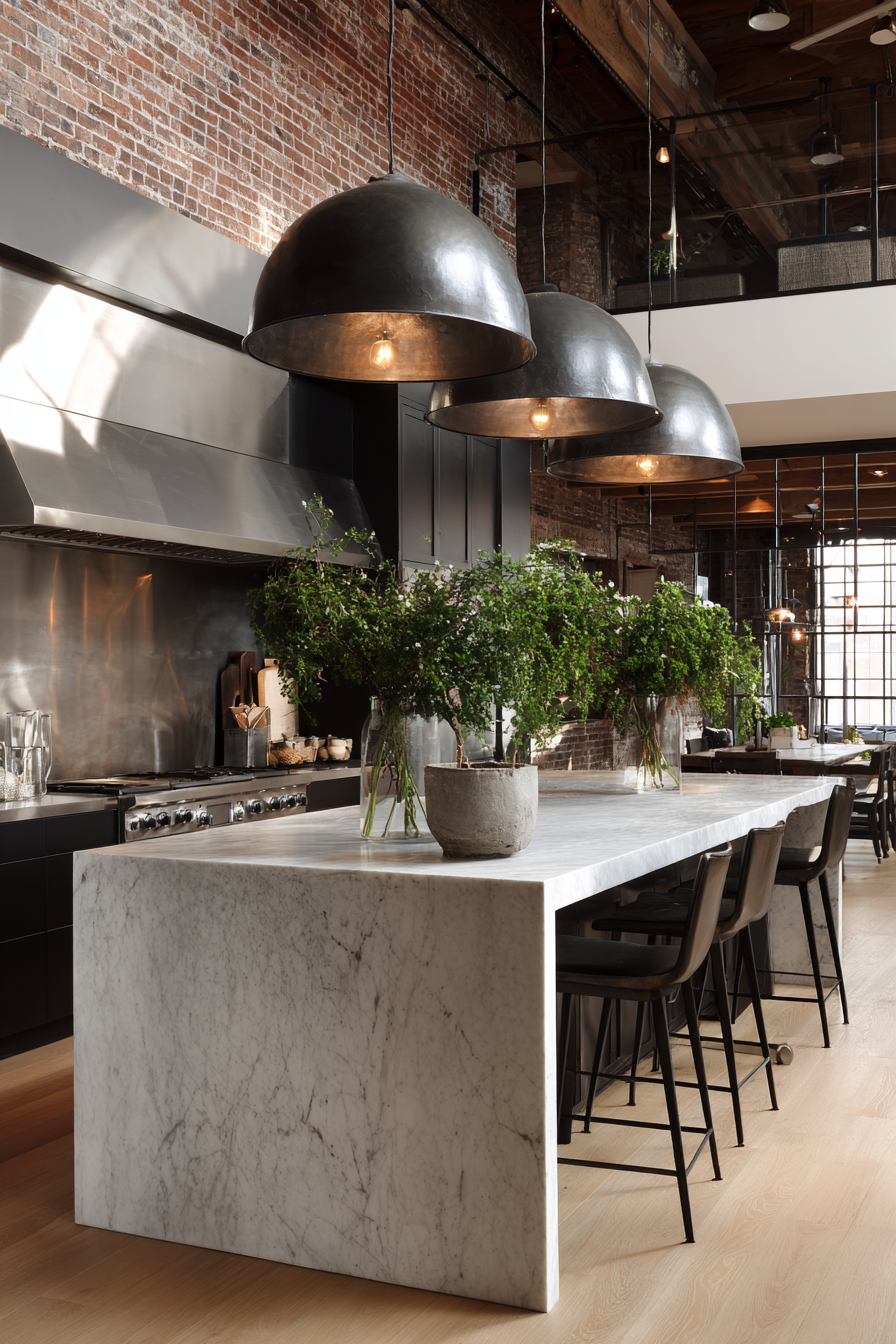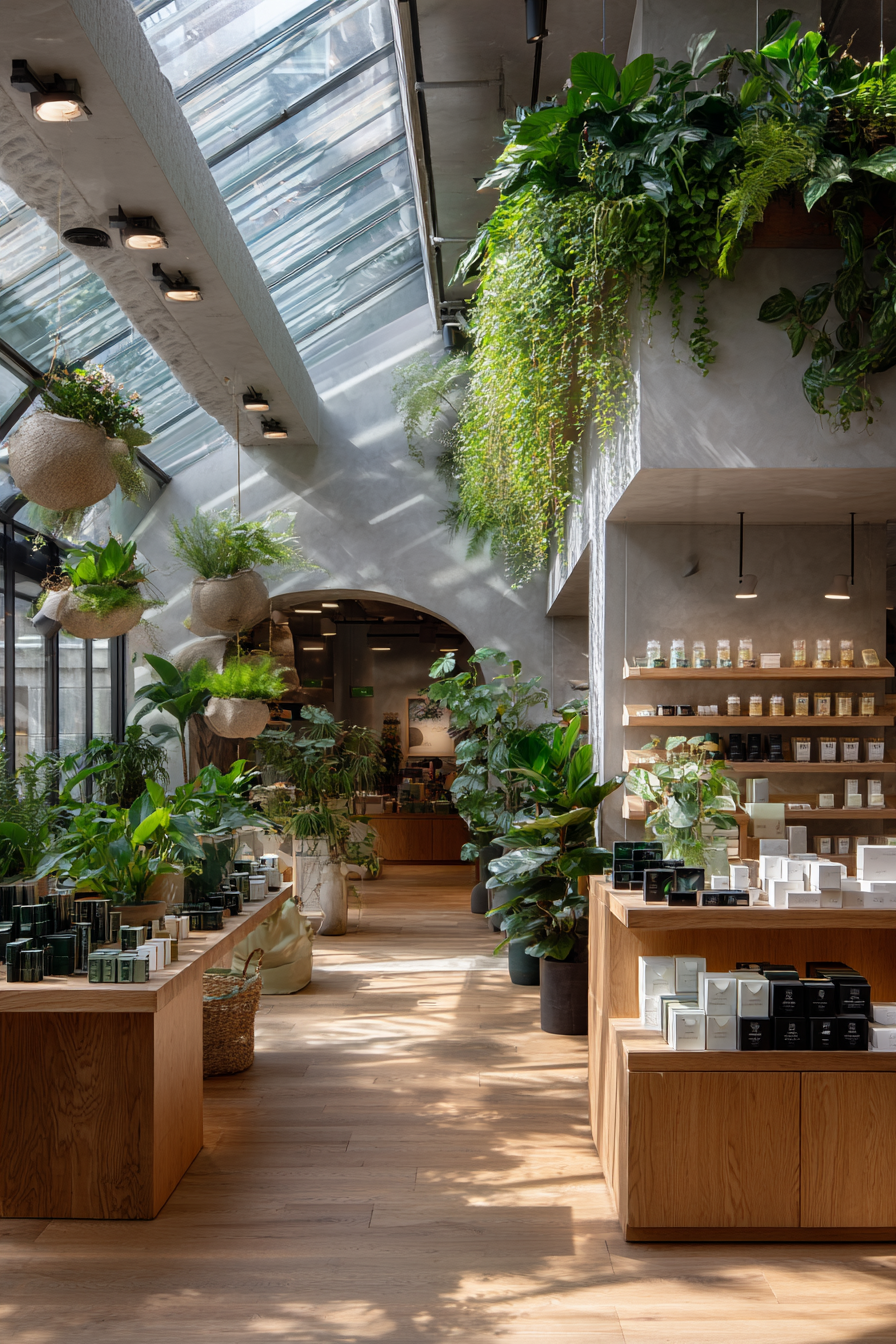Did you know 63% of homeowners now prioritize functional design over purely decorative elements in their living spaces? This shift has reshaped how we approach home interiors, especially in areas where practicality meets daily life.
What started as a trend rooted in repurposed warehouses has evolved into a movement that balances raw textures with modern comfort. We’ve seen this aesthetic grow from stark, utilitarian beginnings to spaces that feel both grounded and refreshingly contemporary.
The secret lies in celebrating authenticity. Exposed beams or concrete countertops aren’t just visual statements, they tell a story of craftsmanship. Large windows flood these areas with natural light, softening metallic accents and creating warmth without sacrificing edge.
Contrary to myths, this approach doesn’t require a full renovation. Strategic choices like open shelving or matte-black fixtures can transform existing layouts. Designers often emphasize working with a room’s natural bones rather than against them.
Key Takeaways
- Functional layouts now drive 63% of kitchen renovation decisions nationwide
- Raw materials like reclaimed wood add character while maintaining practicality
- Natural lighting plays a crucial role in balancing industrial elements
- Small updates (e.g., hardware swaps) create big visual impact
- Professional designers recommend embracing existing architectural features
FIND THE GALLERY AT THE END OF THIS POST
Industrial style kitchen ideas: Key Trends for 2025
Designers are reimagining culinary environments by blending rugged textures with sleek functionality. The emphasis lies in contrasting material pairings, think rich walnut cabinetry against brushed steel countertops. This approach creates visual tension while maintaining harmony, proving that raw surfaces can coexist with modern comfort.
Color schemes are shifting toward earthy neutrals with unexpected pops of deep greens or terracotta. These tones soften concrete floors or exposed brick walls without diluting their character. “Layering is about balance, not excess,” notes Los Angeles-based designer Mara Holt. Her team often pairs warm leather barstools with cool metal pendant lights for this effect.
Appliances now serve as intentional centerpieces rather than hidden necessities. Matte-black ranges or copper refrigerators anchor the room, their bold profiles complementing minimalist backdrops. Open shelving continues to thrive, but with a twist: asymmetrical arrangements that showcase handcrafted ceramics or forged ironware.
- Reclaimed timber beams add history to new constructions
- Concrete-look tiles offer durability without coldness
- Magnetic knife strips double as wall art
Sustainability drives material choices, with salvaged wood and recycled glass gaining traction. These elements inject authenticity while reducing environmental impact. Clever storage solutions, like hidden pull-out pantries, keep counters clutter-free, ensuring the utilitarian vibe remains uncompromised.
Lighting designs evolve beyond single pendants. Designers layer recessed LEDs with adjustable track systems, allowing users to highlight architectural details or cooking zones. This adaptability supports both task-oriented needs and ambient evening moods.
Designing Your Industrial Kitchen: Essential Materials and Finishes
The foundation of any rugged culinary space lies in its raw, tactile surfaces. We start with exposed brick walls, a hallmark feature that adds instant texture. Leave them untouched for historical charm or coat them in muted tones to align with your palette.
Metal dominates this aesthetic through fixtures and accents. Stainless steel shines in appliances and countertops, resisting wear while maintaining sleek lines. Introduce warmth with copper pendant lights or brass cabinet pulls, creating contrast against cooler tones.
Wood elements prevent sterility. Reclaimed timber shelves or flooring bring organic softness. “We source beams from deconstructed barns,” shares contractor Eli Martinez. “Each knot tells a story.”
Flooring balances grit and practicality:
- Polished concrete resists spills
- Hand-scraped oak planks hide scratches
- Hexagonal tiles mimic factory patterns
Mix materials thoughtfully. Pair rough-hewn brick with smooth steel countertops. Let each surface enhance others without clutter. Focus on durability, these spaces thrive when materials age gracefully.
Incorporating Vintage Elements and Personalized Decor
Historic factory relics are finding new life in modern homes. We transform salvaged machinery into functional decor elements, think gears repurposed as drawer pulls or old factory carts turned islands. These pieces add warmth while honoring industrial heritage.
Authenticity matters when blending eras. We source genuine factory signage from decommissioned plants, then pair them with sleek appliances. A 1940s metal locker becomes open storage, its patina contrasting glossy cabinets.
Three ways to balance old and new:
- Use reclaimed wood beams as floating shelves above stainless steel counters
- Mount vintage gauges as wall art near smart ovens
- Install aged brass faucets against concrete-look tiles
Family heirlooms complete the narrative. Grandmother’s iron skillet displayed on a magnetic strip becomes both tool and artwork. We layer textures carefully, distressed leather stools soften cold metal surfaces without cluttering sightlines.
The goal? Spaces that feel collected, not designed. Each vintage element serves purpose while whispering stories of workshops past. This approach turns utilitarian zones into rooms with soul.
Optimizing Functionality in Industrial Kitchen Spaces
Efficiency defines modern culinary spaces built for serious cooking. We prioritize professional-grade appliances, commercial ranges with high BTU burners and oversized refrigeration units. These workhorses handle frequent use while blending into the raw aesthetic through matte finishes or brushed metal surfaces.
Layout matters as much as equipment. Open floor plans merge cooking zones with living areas, ideal for hosting gatherings. Designers recommend triangular workflows between sinks, stoves, and storage to minimize steps. A 36-inch sink with a pull-down sprayer becomes a multitasking hub for prep and cleanup.
Smart storage maintains the uncluttered look central to this design philosophy. Deep drawers organize bulky pots, while ceiling-height cabinets utilize vertical space. Open shelves display handcrafted ceramics, marrying practicality with visual appeal.
Key upgrades enhance daily use:
- Pot fillers above stoves simplify cooking large meals
- Magnetic knife strips free up counter space
- Integrated trash/recycling bins keep workflows seamless
We balance rugged materials with ergonomic comfort. Thick concrete counters withstand heavy use, while under-cabinet lighting reduces eye strain. The result? Spaces that feel both indestructible and inviting, ready for midnight snacks or dinner parties alike.
Lighting and Fixtures: Setting the Industrial Mood
Lighting transforms spaces from ordinary to extraordinary. In these utilitarian-inspired rooms, fixtures become sculptural elements. We focus on metal-shaded pendant lights with exposed bulbs, their raw appeal echoes factory heritage while casting warm pools of illumination.
Balance defines successful schemes. Matte-black steel pendants over islands provide task lighting, while recessed LEDs highlight textured walls. For contrast, pair brass sconces with concrete surfaces. The interplay creates depth without overwhelming sightlines.
Three principles guide our approach:
- Choose fixtures with visible hardware, think riveted aluminum cages
- Cluster multiple pendants at varying heights above dining zones
- Use dimmers to shift from bright prep areas to ambient evening glow
Vintage finds add authenticity. We scour salvage yards for fixtures with patina, a dented steel shade here, a weathered bronze arm there. These pieces tell stories through their imperfections, softening newer elements.
Strategic placement matters most. Hang pendants 30-36 inches above countertops for optimal task light. Position track systems parallel to windows, complementing natural brightness. The result? Spaces that feel both rugged and welcoming, day or night.
Conclusion
The fusion of practicality and character defines today’s most sought-after culinary environments. By blending raw materials with personalized accents, these spaces prove functionality and warmth coexist beautifully. We balance exposed brick walls and stainless steel surfaces with reclaimed wood shelves or hand-forged lighting, details that help create depth without overwhelming.
Successful execution hinges on honoring a room’s existing architecture. Strategic placement of vintage finds or modern upgrades ensures spaces feel curated rather than chaotic. Think patinated hardware against sleek cabinetry, or rustic wood beams framing state-of-the-art appliances.
Ultimately, this approach thrives through adaptability. Whether integrating professional-grade tools or family heirlooms, the goal remains clear: crafting areas that serve daily needs while sparking connection. With thoughtful material selection and intentional layouts, even compact zones become inviting hubs for gathering and creating.
FAQ



